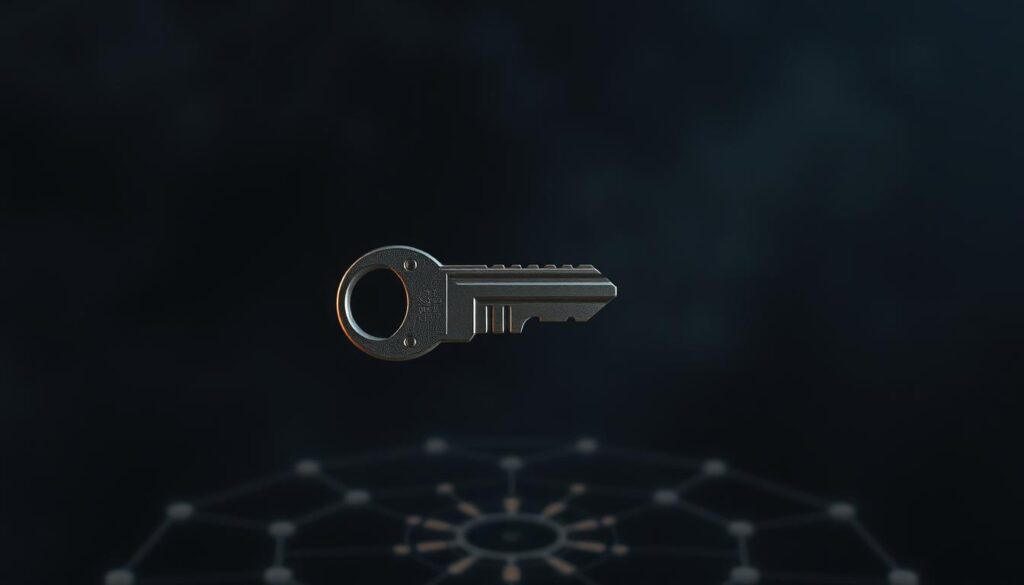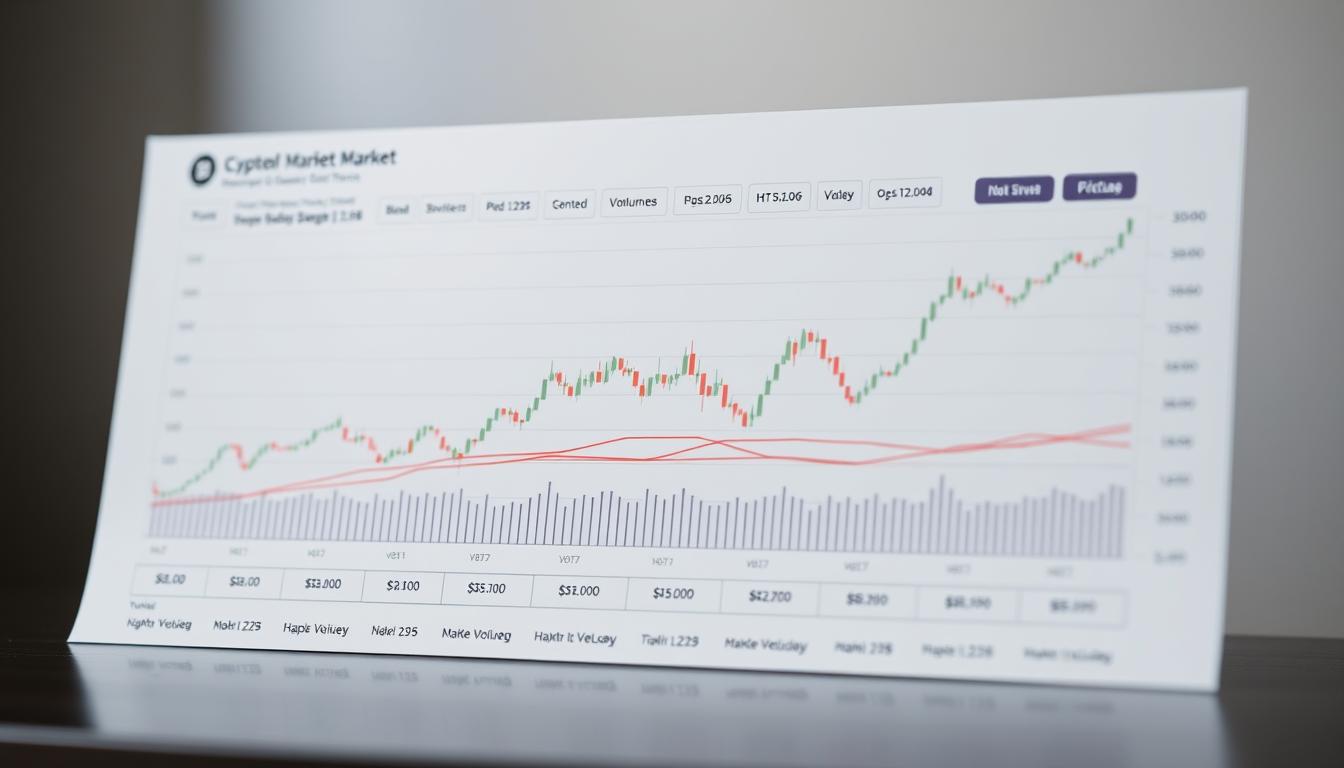Now Reading: Cryptocurrency wallet cold storage security: Protect Your Assets
- 01
Cryptocurrency wallet cold storage security: Protect Your Assets
Cryptocurrency wallet cold storage security: Protect Your Assets

Digital investments like Bitcoin and Ethereum have changed how we think about money. But these assets do not have the same protections as money in a bank. There is no FDIC insurance. This makes personal protection methods absolutely essential.
Following major security breaches, like the Ellipal incident involving XRP, the need for strong safeguards became clear. Online systems can be vulnerable to hackers and malware. This is why many investors now prioritize offline solutions.
This guide will explore why keeping your holdings offline has become the gold standard. We will cover everything from basic concepts to advanced strategies. Our goal is to give you peace of mind by showing you how to shield your portfolio from unauthorized access.
Key Takeaways
- Digital assets lack traditional banking protections, making personal security vital.
- High-profile thefts have proven the vulnerabilities of internet-connected systems.
- Offline storage methods are a top priority for serious investors.
- This guide covers foundational concepts and advanced implementation strategies.
- Proper protection measures provide significant peace of mind for your portfolio.
Understanding Cryptocurrency Wallet Cold Storage Security
The foundation of protecting digital wealth lies in comprehending how different storage approaches impact vulnerability to cyber threats. Offline methods create a barrier that remote attackers cannot penetrate.
What Is Cold Storage?
This approach involves keeping your digital asset information completely disconnected from internet connectivity. The essential codes that control your holdings remain in an isolated environment.
Unlike online systems that stay connected for quick transactions, this method maintains separation. Your authorization codes only briefly connect when you need to make transfers.
| Feature | Online Storage | Offline Method | Risk Level |
|---|---|---|---|
| Internet Connection | Constant | None during storage | High vs Low |
| Access Speed | Instant | Requires physical steps | Convenience trade-off |
| Hacker Vulnerability | Exposed 24/7 | Protected by air gap | Significant difference |
| Best Use Case | Frequent trading | Long-term holding | Strategy dependent |
Benefits of Keeping Assets Offline
The primary advantage is dramatically reduced exposure to digital theft attempts. Malware, phishing schemes, and remote attacks become ineffective against properly implemented offline systems.
This protection extends beyond individual hackers. It also safeguards against exchange failures and platform issues that have affected many users. Your holdings remain under your direct control.
Serious investors particularly value this approach for substantial portfolios. While it sacrifices some convenience, the peace of mind justifies the extra steps involved.
Evolution and Trends in Cold Wallet Technology
Industry-wide theft events have catalyzed a technological evolution toward more secure offline solutions. The crypto industry has learned hard lessons from major security breaches that exposed vulnerabilities in connected systems.
Historical Lessons from Past Security Breaches
The Ellipal incident stands as a stark reminder of online wallet risks. Hackers stole $3.05 million in XRP, prompting the company’s shift toward offline solutions. This pattern repeats across the industry.
Major theft incidents have taught valuable information about digital asset protection. When platforms keep user funds in connected systems, even one vulnerability can lead to catastrophic losses. Sophisticated hackers continually develop new attack methods.
These historical lessons drive innovation in cold storage solutions. Manufacturers now prioritize eliminating internet connectivity as an attack vector. The industry recognizes that security outweighs convenience for serious investors.
Each breach contributes to better cryptocurrency protection practices. The cold storage approach has become the standard for safeguarding substantial portfolios against evolving threats.
Key Features of Secure Cold Storage Solutions
Investors seeking maximum protection for their digital portfolios can choose from three primary offline solutions. Each method offers distinct advantages for different user needs and technical comfort levels.
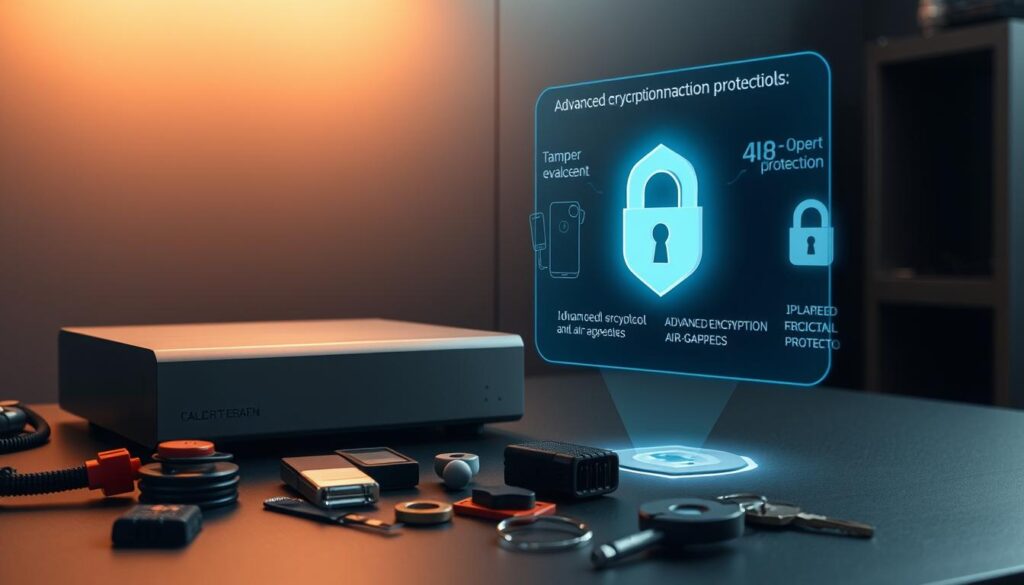
Hardware Wallets, Paper Wallets, and Air-Gapped Devices
Hardware wallets like Ledger and Trezor represent the most popular choice. These physical devices store authorization codes on specialized secure chips.
Paper methods involve printing QR codes and private information on physical sheets. This approach offers complete isolation at minimal cost.
Air-gapped systems use computers that never connect to the internet. They provide the highest level of protection for tech-savvy users.
| Solution Type | Security Level | User Friendliness | Cost Factor |
|---|---|---|---|
| Hardware Devices | High | Excellent | Moderate |
| Paper Methods | Medium-High | Basic | Low |
| Air-Gapped Systems | Maximum | Advanced | Variable |
Security and Compliance Standards
Modern protection products must meet rigorous standards. Regulations like Germany’s BaFin licensing mandate specific protocols.
These requirements include multi-signature support and audit capabilities. Compliance ensures products maintain safety while meeting legal obligations.
The best hardware wallet options balance advanced features with regulatory adherence. This combination provides peace of mind for serious investors.
Cryptocurrency Wallet Cold Storage Security Best Practices
Successful implementation of offline protection methods hinges on developing comprehensive policies and training programs. Organizations must establish clear procedures that address both technical and human factors.
Risk Assessments and Employee Training
Conducting thorough risk evaluations represents the essential first step. Businesses should identify specific vulnerabilities before selecting solutions. This process helps determine appropriate security measures.
Employee education programs are critical for proper key management. All personnel must understand procedures for handling sensitive materials. Training reduces human error and improves overall protection.
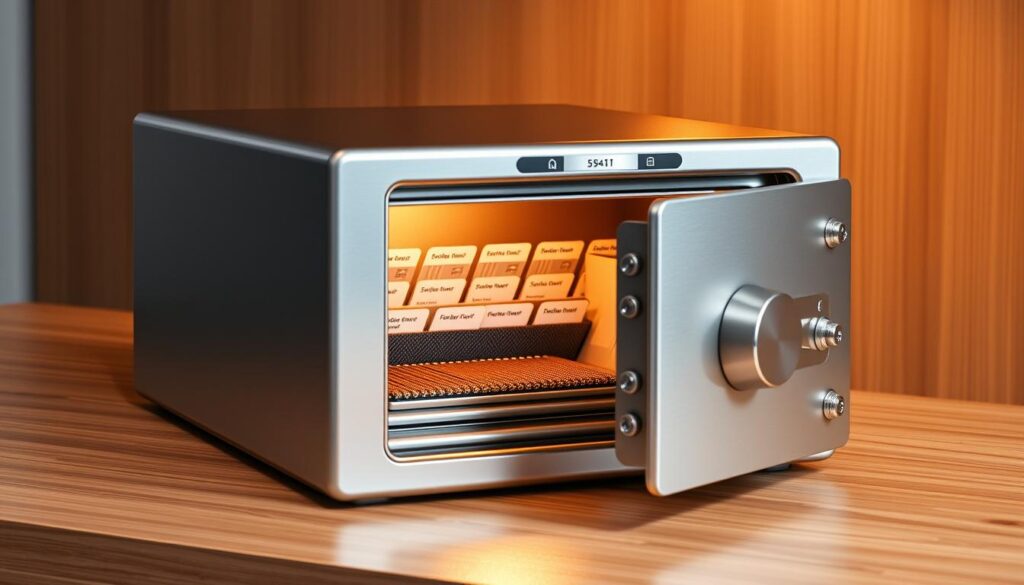
Regular Updates and Backup Strategies
Maintaining current firmware forms a cornerstone of effective protection. Users need to stay informed about emerging threats. Regular updates address newly discovered vulnerabilities.
Backup plans must be carefully executed with multiple secure copies. Store recovery materials in geographically distributed locations. This prevents total loss from disasters.
Testing restoration procedures regularly verifies that backup systems work correctly. Organizations should establish clear policies governing access to their digital container associated with Bitcoin. Following established guidelines significantly reduces risk.
Cold Wallets versus Hot Wallets: Security Trade-offs
When managing digital assets, the choice between cold and hot wallets represents a fundamental security decision. These two approaches serve different purposes for crypto investors.
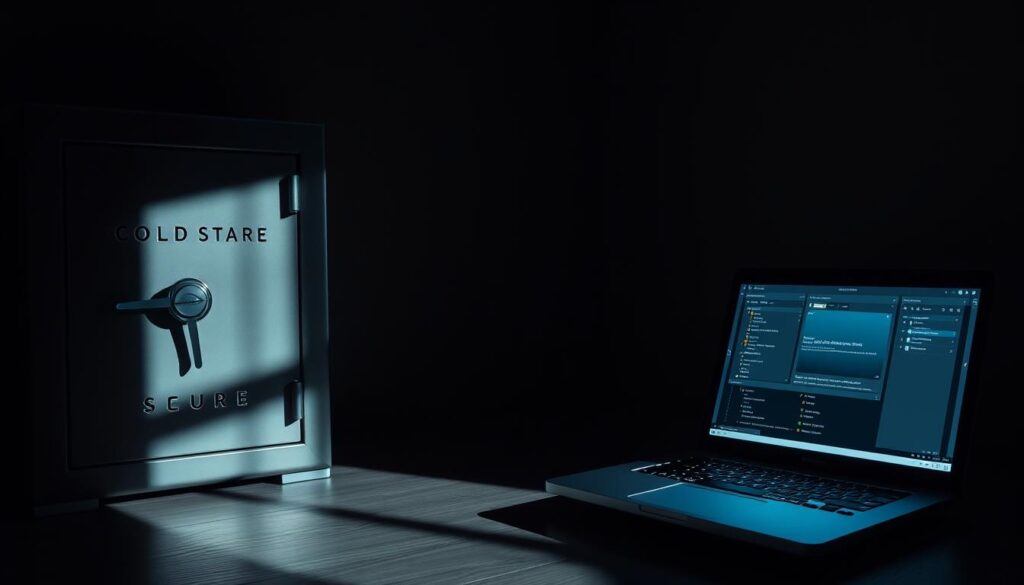
Cold wallets keep your private keys completely offline. This isolation provides maximum protection against online threats. Hot wallets remain connected to the internet for quick access.
Advantages of Offline Storage
The primary benefit of cold storage is near-total immunity to remote attacks. Hackers cannot reach keys that never touch the internet. This makes cold wallets ideal for long-term holdings.
Hot wallets excel at convenience for frequent transactions. They allow instant portfolio adjustments and dApp interactions. However, this accessibility comes with higher vulnerability.
Balancing Convenience with Security
Most experienced users employ both types strategically. They keep small amounts in hot wallets for daily use. The majority of their assets stay secure in cold storage.
This balanced approach minimizes risk while maintaining functionality. It acknowledges that security and convenience often require compromise.
- Cold wallets offer superior protection but slower transaction times
- Hot wallets provide instant access with increased exposure
- The optimal strategy combines both based on individual needs
Innovative Hybrid Solutions and Regulatory Compliance
Forward-thinking approaches to digital asset protection are reshaping how users balance convenience with risk mitigation. These integrated methods offer a practical way to manage holdings effectively.
Integrating Hot and Cold Storage Systems
Modern wallets now combine different safeguarding approaches. Coinbase Wallet exemplifies this trend by integrating with hardware devices.
MindGTC’s hybrid solution automatically manages fund allocation between secure and accessible storage. This approach maintains protection while enabling necessary transactions.

Meeting Global and MiCA Standards
Regulatory requirements are driving adoption of advanced safeguarding methods. The EU’s MiCA regulation mandates specific custody standards.
These rules require businesses to demonstrate secure practices and maintain detailed records. Proper compliance ensures client assets remain protected against threats.
| Solution Type | Key Feature | Best For | Regulatory Alignment |
|---|---|---|---|
| Coinbase Integration | Hardware wallet connectivity | Web3 applications | Global standards |
| MindGTC Hybrid | Automatic fund management | Business operations | MiCA compliance |
| Dual-Wallet Strategy | Separate storage tiers | Large portfolios | BaFin requirements |
Practical Steps to Strengthen Your Cold Storage Security
Taking concrete actions to fortify your investment protection involves following a clear sequence of protective measures. This systematic approach ensures comprehensive coverage against both digital and physical threats to your holdings.
Step-by-Step Implementation Guide
Begin by establishing your recovery phrase properly. This set of words serves as your master backup for restoring access if your device experiences damage or loss.
Store your authorization codes with extreme care. These character strings grant complete control over your digital money. Anyone obtaining them can transfer your tokens irreversibly.
Choose physical locations wisely for your protection device. Fireproof safes protect against damage from accidents. Bank deposit boxes offer additional institutional safeguards.
Enable all available protection features on your hardware. Set strong PIN codes and consider multi-signature setups for high-value holdings. These steps create multiple approval requirements.
Regularly test your recovery process to verify functionality. This practice confirms your backup materials remain accessible and effective when needed.
Stay vigilant against sophisticated theft attempts by hackers. Download software only from official sources and never share sensitive information. These precautions significantly reduce risk exposure.
Conclusion
The journey toward true digital asset protection culminates in mastering offline storage principles. This approach has become the benchmark for safeguarding investments against evolving digital threats.
Proper implementation of these measures provides essential protection for valuable holdings. Both new and experienced investors benefit from matching security approaches to their specific needs.
While offline solutions require more effort than connected alternatives, the protection they offer justifies the investment. Following the guidelines in this guide helps ensure your assets remain secure long-term.
FAQ
What is the main difference between a hot wallet and a cold wallet?
A hot wallet is connected to the internet, making it convenient for frequent transactions. A cold wallet, like a Ledger or Trezor device, stores your private keys completely offline. This isolation from online networks provides a much stronger defense against hackers and theft.
How do I create a secure backup for my hardware wallet?
When you set up a hardware wallet, it generates a unique recovery seed phrase. Write this phrase down on the provided paper card and store it in multiple safe locations, like a fireproof safe or a safety deposit box. Never store this information digitally, as it could be compromised.
Are paper wallets still a safe option for holding tokens?
Paper wallets, which involve printing your keys on paper, were once popular. However, they carry risks like physical damage, loss, and user error during the transaction process. Modern hardware wallets are generally considered a more robust and user-friendly solution for long-term asset protection.
What security measures should I look for in a hardware wallet?
Seek out products with a secure element chip, which is a dedicated microprocessor designed to protect sensitive data. Also, ensure the device has a clear screen to verify transaction details directly on the device and requires physical confirmation for any action, adding a critical layer of verification.
Can my funds be stolen if my cold storage device is physically damaged?
Your digital money is safe as long as you have your recovery seed phrase. This phrase is the master key to your assets. If your device is lost or broken, you can simply restore access to your holdings by entering your seed phrase into a new, compatible wallet from the same manufacturer.


